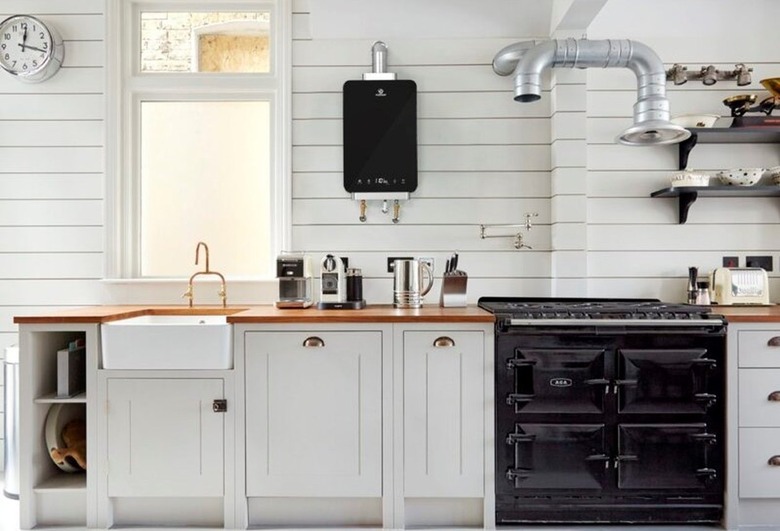How To Clean A Hot Water Heater With Vinegar
We may receive a commission on purchases made from links.
Anyone unloading a dishwasher is familiar with water spots — mineral deposits left after drying. Depending on the style of water heater you have, such deposits can have a big impact, especially with a tankless water heater. Those mineral deposits build up over time, dramatically reducing the efficiency and life expectancy of any tankless system. Luckily, vinegar is terrific at removing those deposits, but you'll need to flush the heater afterward.
Before You Get Started
Before You Get Started
There are steps that most tankless hot water heaters require for cleaning and flushing. However, tankless hot water heaters can be gas or electric, varying in power, size, and components, so there's no one-size-fits-all method for cleaning and flushing tankless heaters. Luckily, it's very easy to download an owner's manual online for your exact system. Its recommended steps will be detailed specifically for your system.
You should clean your tankless hot water heater at least once per year if not more often depending on the hardness of your local water supply and the volume your household uses.
Supplies You’ll Need
Supplies You'll Need
A sump pump, or submersible pump, is needed. Use a 1/6-horsepower pump, as anything stronger can damage the heater's inner workings. At $50 to $150 for a pump and the need for annual maintenance for tankless water heaters, it's wise to buy rather than rent.
It will take 3 gallons of food-grade white vinegar to get this job done. While people like cleaning-strength vinegar at 6 percent acidity, the experts for this job recommend food-grade vinegar. That jump from 5 percent to 6 percent acidity can be hard on any gaskets or seals, so stick to food grade.
A 5-gallon bucket is needed for the vinegar and the pump. You'll need two 2- to 4-foot lengths of rubber hose for the pump, but these will generally be included with the pump.
Flushing Your Tankless Water Heater
1. Get Started
Turn off the gas or shut off the circuit breaker for your heater. Remove the access panel or cover as directed by your owner's manual. Shut off the water supply and then release the pressure valve.
2. Set Up the Pump
Find the cold-water service port and attach a hose to this. Then, run it to your sump pump. There may be a separate hose connection for you to use, or you may have to remove the existing cold-water supply hose to attach your hose. Either way, once attached, set your sump pump inside the 5-gallon bucket filled with 3 gallons of undiluted distilled vinegar.
3. Attach the Second Hose
Attach the second hose to the hot-water service port and then put the other end into the bucket filled with vinegar.
4. Start Pumping the Vinegar
Open the hot- and cold-water service ports and turn on the sump pump. The pump will push vinegar into the system, pull it back out into the bucket, and continue that cycle for as long as the sump pump is running. Do it for a minimum of one hour or the scaling won't be removed.
5. Turn Off the Pump
With your water heater descaled, turn off the pump. You can dump the vinegar now. Remove the two pump hoses from the water heater. Return the hot- and cold-water hoses back to their respective service ports.
6. Flush the Vinegar
What's next depends on your unit. Often, it involves opening the cold-water shutoff valve and closing the cold-water service port. This should flush out any remaining vinegar. Afterward, close the valve and allow the water to finish draining. Then, close the hot-water port.
7. Don't Forget the Filter
Clean the filter if you have one. Soak in-line filters in a vinegar solution to get any buildup off, or just rinsing it under running water may do the trick. Put it back in place before you turn on the system for household use. Then, add a reminder to your calendar to do it all again a year from now or just include it on your annual fall maintenance to-do list.
